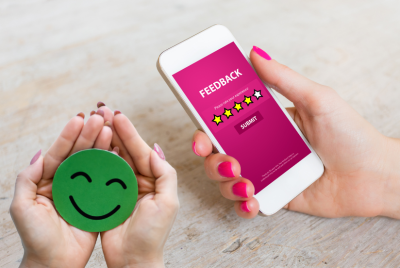Unlocking the Power of the Consideration Funnel
Are you ready to dive deep into the world of marketing and consumer decision-making? The consideration funnel is your secret weapon for understanding the intricate process that guides consumers toward making a purchase. In this article, we’ll explore the ins and outs of the consideration funnel, providing you with actionable insights to boost your marketing strategies and drive more conversions.
What Is the Consideration Funnel?
In marketing, the consideration funnel is a pivotal concept that outlines the stages a potential customer goes through before making a purchase decision. It’s all about understanding the thought process, emotions, and actions that individuals experience on their journey from being aware of a product or service to becoming a paying customer.
The Four Key Stages of the Consideration Funnel
Let’s break down the consideration funnel into its four main stages:
- Awareness – The journey begins with consumers becoming aware of a product or service’s existence. At this stage, they may have a problem or need, but they’re not sure about the solutions available.
- Interest – As consumers move deeper into the funnel, they start showing a genuine interest in your offering. They are actively seeking more information and are open to exploring what you have to offer.
- Consideration – This is the stage where consumers weigh their options. They compare your product or service with others, assessing the benefits, pricing, and overall value.
- Decision – At the bottom of the funnel, consumers are ready to make a decision. They’ve evaluated their options and are now choosing whether to make a purchase or not.
The Power of Understanding Your Audience
Successful marketing hinges on a deep understanding of your target audience. To create effective content and strategies, you need to walk in your customers’ shoes, experiencing the consideration funnel from their perspective.
Tailoring Content for Each Stage
- Awareness: At the top of the funnel, create content that educates and entertains. Blog posts, infographics, and social media posts can capture attention and spark curiosity.
- Interest: Move your audience from awareness to interest with detailed guides, videos, and case studies. Show them how your product or service solves their problems.
- Consideration: Offer comparison charts, in-depth product descriptions, and customer reviews. Help them see why your offering is the best choice.
- Decision: At the bottom of the funnel, provide clear calls to action and limited-time offers to encourage conversions.
Creating Compelling Content
To guide potential customers through the consideration funnel effectively, your content should be engaging, informative, and persuasive.
Crafting Engaging Content
- Tell Stories: Share customer success stories or your own journey as a brand. People connect with narratives.
- Use Visuals: Incorporate eye-catching images and videos to break up text and make your content more appealing.
- Leverage User-Generated Content: Showcase customer testimonials and reviews to build trust.
Offering Value at Every Stage
- Top of the Funnel: Provide free resources like e-books, webinars, or quizzes in exchange for email addresses. This builds your email list and keeps potential customers engaged.
- Middle of the Funnel: Offer in-depth guides, whitepapers, and expert interviews. Encourage prospects to explore your product or service.
- Bottom of the Funnel: Share product demos, free trials, and limited-time discounts. Remove any remaining obstacles to conversion.
The Role of SEO in the Consideration Funnel
Search Engine Optimization (SEO) is a crucial element in guiding potential customers through the consideration funnel.
Top-Funnel SEO
- Keyword Research: Identify the words and phrases your target audience uses during their initial research phase.
- Blogging: Create informative and engaging blog content optimized for these keywords to capture their attention.
Middle-Funnel SEO
- Optimize Landing Pages: Ensure your landing pages provide detailed information about your products or services while keeping your potential customers interested.
- Video SEO: If using videos, optimize them for search engines by adding relevant tags, descriptions, and transcripts.
Bottom-Funnel SEO
- Optimize for Conversions: Your bottom-funnel pages should focus on persuading visitors to make a decision. Use clear calls to action, reassuring testimonials, and trust-building elements.
- Local SEO: If your business has a physical presence, local SEO can help potential customers find you when they’re ready to make a purchase.
Frequently Asked Questions (FAQs)
Q1: What is the primary goal of the consideration funnel?
A1: The primary goal of the consideration funnel is to guide potential customers through the stages of awareness, interest, consideration, and, ultimately, the decision to purchase a product or service.
Q2: How can I create awareness at the top of the funnel?
A2: To create awareness, focus on content that educates and entertains. Use blog posts, infographics, and social media to capture attention and spark curiosity.
Q3: What types of content are effective for the middle of the funnel?
A3: In the middle of the funnel, detailed guides, videos, case studies, and customer testimonials are effective in keeping potential customers engaged and interested.
Q4: How can I optimize my content for SEO at the bottom of the funnel?
A4: For bottom-funnel SEO, focus on creating clear calls to action, providing product demos, offering free trials, and incorporating limited-time discounts to encourage conversions.
Q5: What is the significance of local SEO in the consideration funnel?
A5: Local SEO is essential if your business has a physical presence. It helps potential customers find your local stores or services when they’re ready to make a purchase.
Q6: How can I measure the effectiveness of my consideration funnel strategy?
A6: You can measure the effectiveness of your strategy by tracking key performance indicators (KPIs) such as conversion rates, click-through rates, and customer journey analysis.
Conclusion
The consideration funnel is a powerful tool that, when understood and utilized effectively, can transform your marketing efforts. By tailoring your content, implementing SEO strategies, and offering value at every stage, you can guide potential customers through the funnel and boost your conversion rates. Remember that it’s all about putting your customers first, providing them with the information they need, and making their journey toward a purchase as smooth as possible. So, go ahead and unlock the full potential of the consideration funnel in your marketing endeavors.




